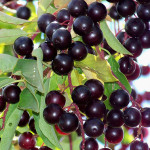Many of us have so much to do- so many things shouting for attention and grasping at our time. Our minds are alert and cluttered with a million thoughts, and sometimes it’s hard to notice what’s important. From my experience, ignoring what’s important will result in problems that come back to haunt you later.
I had the good fortune to be the fly on the wall at a conference recently, one attended by scientists with far more knowledge about wildlife than I have. The focus of the conference involved how to monitor birds and manage and interpret the data that is collected, what the data is telling us about bird populations and the hazards and successes birds experience, and finally how we can use the information to make the world better for birds. Unlike the perception of many people, such meetings are filled with critical discussions about how measurement methods might be improved and what factors might taint the data collected and lead one to a conclusion that is not true. Each presentation includes qualifications of what the information does and does not reveal, and researchers interpreted their studies very conservatively. Ideology was omitted, and politics were not discussed. The discussions were refreshing to listen to, to say the least.
So where do we and our wildlife stand? There is a very mixed bag of conclusions. All is not lost, but we also have a long way to go. The bright side is that there is much good that can be done, and if we can see clearly we can find direction for our efforts.
The critical discussions about bird monitoring and analysis are a healthy exercise in looking for truth. More and more, mathematicians are working with biologists to help design research that yields meaningful information. Sharing of data is highly encouraged, so that others can review how it is interpreted and try to replicate research to make sure false claims are not made. This approach strengthens not only the process but the results that are obtained. We would all benefit if such an approach was taken regarding other issues.
The second aspect, regarding the hazards that birds face was equally interesting. As research accumulates projects are reviewed and relative importance can be ranked for those hazards. The latest review of many studies was done in 2013 and its conclusions are interesting. People change the environment and affect wildlife in many ways, of course, but those having the most impact on birds may not be what we expect at first. Aside from huge issues like habitat (about a million acres were developed in Wisconsin from 2001 to 2011) and climate changes, the biggest hazard to birds comes from free-roaming cats. I love cats, and our family has brought two barn kittens into our house as pets because they should not be outdoors where they are an invasive species and don’t behave like our native predators. And there are lots of them- in some areas more than 100 outdoor cats per square mile. Estimates are that outdoor cats kill, conservatively, 2.4 billion birds in the US each year, and many more mammals. Next are buildings- windows kill millions of birds, especially during migration, followed by vehicles at tens to hundreds of millions of birds, power lines, and communication towers. The cumulative numbers are staggering, and it’s no wonder that one study predicts that 24 bird species will essentially become extinct in a relatively short period of time, say 50 years.
 We’ve done a lot of counting and analysis, and continue to do so. What do we do for birds in the meantime? Keeping cats indoors is obvious, and so too is making the urban landscape more bird-friendly. Urban areas are not lost to birds- if we put just a little thought to what we plant we can probably make a difference. Certainly robins and cedar waxwings respond quickly to the addition of just about any kind of fruit-bearing shrub or tree and will benefit as long as that tree isn’t a foreign invasive one. There are dozens of kinds that can be planted near houses, on the edges of yards, and in unmanaged “waste” places. Native wildflowers can be added for butterflies and pollinating insects, many of which need help as well. In this way we extend the benefit of growing plants beyond our own interests, to that of helping nature in a bigger way- gardening with a purpose if you will. Early fall is a good time to plant trees and shrubs after the summer heat- and planting the right ones will give you the satisfaction of making the world a better place on several levels.
We’ve done a lot of counting and analysis, and continue to do so. What do we do for birds in the meantime? Keeping cats indoors is obvious, and so too is making the urban landscape more bird-friendly. Urban areas are not lost to birds- if we put just a little thought to what we plant we can probably make a difference. Certainly robins and cedar waxwings respond quickly to the addition of just about any kind of fruit-bearing shrub or tree and will benefit as long as that tree isn’t a foreign invasive one. There are dozens of kinds that can be planted near houses, on the edges of yards, and in unmanaged “waste” places. Native wildflowers can be added for butterflies and pollinating insects, many of which need help as well. In this way we extend the benefit of growing plants beyond our own interests, to that of helping nature in a bigger way- gardening with a purpose if you will. Early fall is a good time to plant trees and shrubs after the summer heat- and planting the right ones will give you the satisfaction of making the world a better place on several levels.
